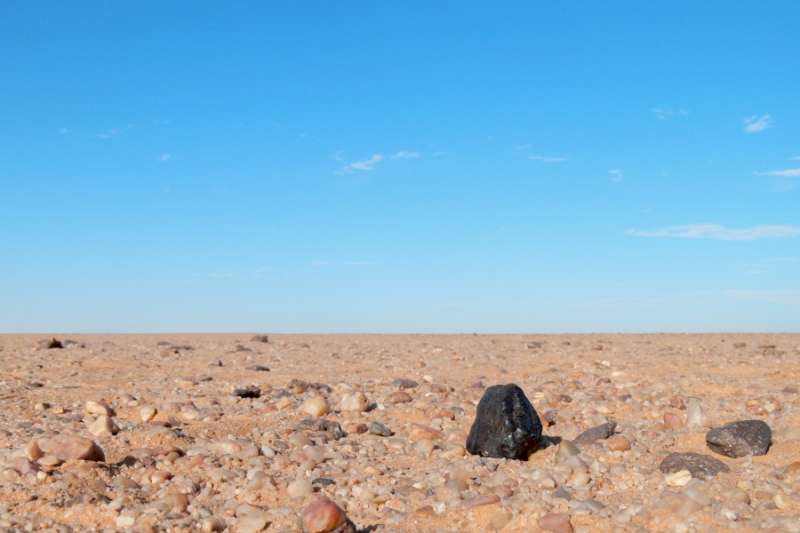Credit & Copyright: Peter Jenniskens
(SETI Institute/NASA Ames)
Explanation:
Small asteroid 2008 TC3
fell to Earth at dawn on October 7, 2008,
tracking through the skies over the Nubian Desert in northern Sudan.
That event was remarkable because it was the first time an
asteroid was detected in space
before
crashing into planet Earth's atmosphere.
It was generally assumed the
asteroid
itself had completely disintegrated to dust.
But, based on satellite and ground observations of the
atmospheric impact event,
Dr. Mauwia Shaddad of the University of Khartoum, aided by
Dr. Peter Jenniskens of the SETI Institute
and NASA Ames Research Center, led
an expedition of students and staff
to the area, combing the desert
for surviving fragments.
On December 6, 2008, two hours after their search began, the first
meteorite
was found.
The team ultimately collected some 280 small
meteorites,
now called Almahata Sitta, with a total mass of about 5 kilograms --
the first material
recovered from a known asteroid.
In stark contrast to the lighter-colored stones, the
black fragment in the picture is Almahata Sitta meteorite number 15.
About 4 centimeters in diameter, it is seen as it came to rest on
the desert floor.
Editor's note: In Arabic, Almahata Sitta is "Station Six": a railway stop in the Nubian desert where witnesses reported seeing the bright fireball meteor.
1999 2000 2001 2002 2003 2004 2005 2006 2007 2008 2009 2010 2011 2012 2013 2014 2015 2016 2017 2018 2019 2020 2021 2022 2023 2024 2025 |
Январь Февраль Март Апрель Май Июнь Июль Август Сентябрь Октябрь Ноябрь Декабрь |
NASA Web Site Statements, Warnings, and Disclaimers
NASA Official: Jay Norris. Specific rights apply.
A service of: LHEA at NASA / GSFC
& Michigan Tech. U.
|
Публикации с ключевыми словами:
meteorit - asteroid - impact - астероиды - метеорит
Публикации со словами: meteorit - asteroid - impact - астероиды - метеорит | |
См. также:
Все публикации на ту же тему >> | |
Мнение читателя [1]
